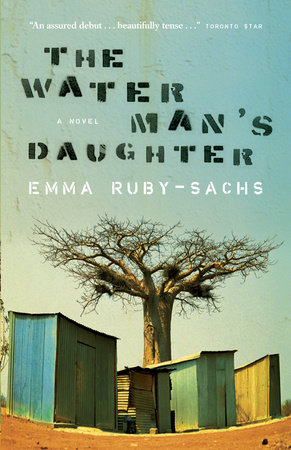The Water Man’s Daughter Reader’s Guide
By Emma Ruby-Sachs


1. What do you think are the particular challenges for an author in setting a work of fiction in a real location, a real point in time, with real political and social situations? The particular attractions? What attracts you to such a novel?
2. Who is your favourite character in this book, and why? Do you feel one character is the “centre” of the novel? Why or why not?
3. Would you characterize The Water Man’s Daughter as a mystery? As a love story? Why or why not?
4. So many relationships are woven into this novel, both between major characters and between those characters and others who are only glimpsed. Which of these relationships intrigue you the most? Why? How do pairs, or even trios, of relationships inform the structure of the novel, progress the plot, flesh out the characters (or not)?
5. The theme of absence is key in the novel. Are the absences instances of betrayal, in the eyes of the characters who are left behind? Do you think Nomsulwa and/or Mira would have followed different life paths had their fathers remained in their families? Why or why not?
6. In general, what do you think about the kind of involvement that Claire’s father’s company has in countries such as South Africa?
7. Nomsulwa and Zembe, though they both grew up in, and remained to work in, the same environment, seem to base their value systems on quite different foundations. Why do think this is the case? And how does Claire’s set of beliefs and values fit in with those she encounters in Johannesburg?
8. How would you characterize Mira? Is he ultimately a hero? A villain?
9. The Water Man’s Daughter is written for the most part from two alternating points of view: why do you think the author chose this particular strategy to tell the story? How do Nomsulwa and Zembe’s different experiences or values or ambitions shape their points of view? In what ways does the author bring these differences to the reader’s attention? How does the chapter from Peter’s point of view vary from the rest of the book?
10. What is it that draws Nomsulwa and Claire together, do you think? Do you think their friendship will be able to survive?
11. The author deliberately leaves some questions unanswered at the end of the novel, allowing space for the reader to imagine more than one “next day” for the characters: what do you think will happen to them?
12. The author paints a vivid portrait of different areas of Johannesburg and its environs; how do the various neighbourhoods compare? Is the portrayal consistent with how you imagine or have experienced South Africa? Does it remind you of other cities or countries you have travelled to? Does it remind you of home? In what ways?
Just for joining you’ll get personalized recommendations on your dashboard daily and features only for members.
Find Out More Join Now Sign In